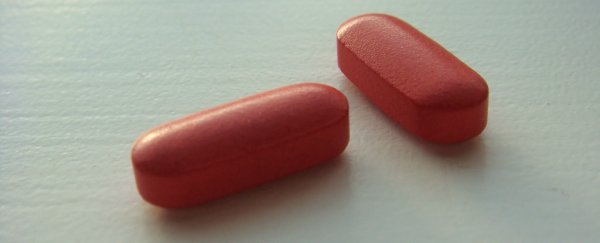Researchers have found that placebos can still reduce a patient's pain, even if they know they're only taking a placebo - something that goes against the long-held hypothesis that placebos only work when patients are unaware of them.
And it wasn't a small amount of pain reduction in the study, either. Those who knowingly took a placebo in conjunction with normal pain treatments saw their pain decrease by up to 30 percent, compared to a 16 percent reduction in those who took the regular treatment alone.
"This new research demonstrates that the placebo effect is not necessarily elicited by patients' conscious expectation that they are getting an active medicine, as long thought," said senior author Ted Kaptchuk, from Harvard Medical School and the Beth Israel Deaconess Medical Centre.
"Taking a pill in the context of a patient-clinician relationship – even if you know it's a placebo – is a ritual that changes symptoms and probably activates regions of the brain that modulate symptoms."
The team gathered 97 individuals who suffer from chronic lower back pain – the world's leading cause of disability. After evaluating each participant for the amount of pain they currently deal with every day, and explaining what the placebo effect is, they randomly split them up into two groups.
The first group was to continue taking their normal pain treatments, which the team called the 'treatment-as-usual' (TAU) group. The second group – known as the 'open-label placebo' (OLP) group – was given a bottle of clearly marked placebo pills.
Since both the TAU and OLP groups were already taking non-opioid medications to combat their pain, the researchers had both groups continue their normal medications, but told the OLP group to take two doses of placebo pills per day.
Three weeks later, the team reconvened with both groups to gauge the differences in their pain levels from the start of the experiment to the end. To their surprise, the OLP group reported a whopping 30 percent in pain reduction across two categories: normal pain and maximum pain.
On the other hand, the TAU group reported a 9 percent reduction in normal pain and a 16 percent reduction in maximum pain, meaning that the placebo group experienced about three times less normal pain and half the maximum pain than the TAU group.
"Our findings demonstrate the placebo effect can be elicited without deception," said lead author Claudia Carvalho, from the Instituto Superior de Psicologia Aplicada (ISPA) in Lisbon, Portugal. "Patients were interested in what would happen and enjoyed this novel approach to their pain. They felt empowered."
While the team doesn't offer a complete hypothesis as to why patients seem to take so well to placebo pills, Kaptchuk thinks it could have to do with being immersed in a new treatment.
"It's the benefit of being immersed in treatment: interacting with a physician or nurse, taking pills, all the rituals and symbols of our healthcare system," he said. "The body responds to that."
"You're never going to shrink a tumour or unclog an artery with placebo intervention. It's not a cure-all, but it makes people feel better, for sure."
While there's still a lot of work to do to understand the underlying factors of how the placebo effect operates and what triggers it – even when the patient is aware – the team's findings will hopefully benefit those suffering from chronic pain issues by offering up new treatments for the future.
The team's work was published in the journal Pain.
